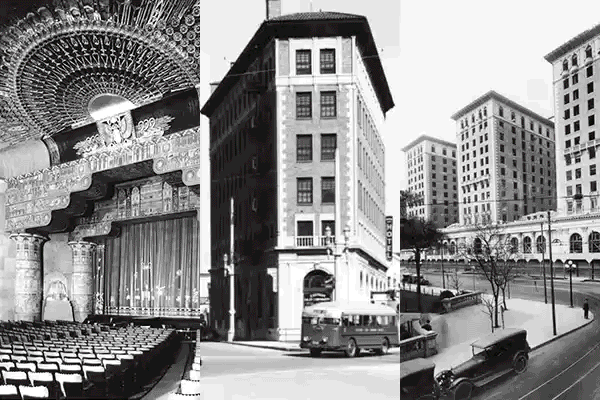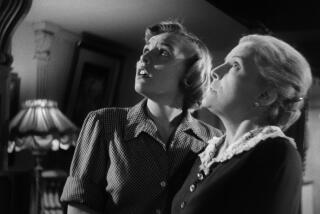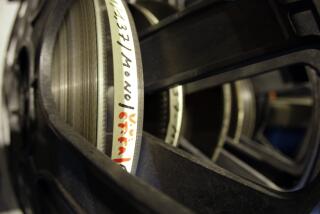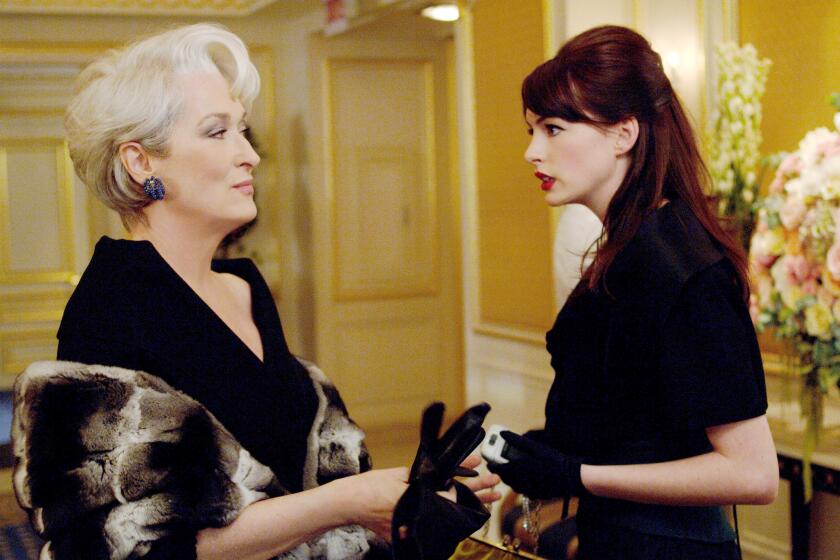Silent Movie Screenings to Help Preservation Work
- Share via
The Silent Movie, 611 N. Fairfax Ave., presents Wednesday through Sunday at 8 p.m. a series of films preserved by the UCLA Film Archive with a portion of the admission going toward its preservation program. By and large all the films, two of which are talkies, have in common a sure sense of the pictorial and inspired production design, heightened by superb black-and-white cinematography.
More important is that most all are entertaining, and they are being shown on fine prints that allow us to see these films much as they were seen by their original audiences. Organists Bob Mitchell, Stan Kann and Dean Mora will be providing live accompaniment.
Along with a pair of Harold Lloyd comedies, “Why Worry?” (1923) and “Hot Water” (1924), which screen Saturday, the series will include three films that have been shown in recent years--”Secrets” (1933), Mary Pickford’s farewell to the screen; “The Godless Girl” (1929), Cecil B. DeMille’s final silent, starring vivacious Lina Basquette in the title role; and “The Bat Whispers” (1930), Roland West’s boldly stylized “old dark house” mystery, shot in 65mm. (The last two screen Sunday.) The rest will be fresh discoveries for most everybody.
“Valley of the Giants” (1927), screening Wednesday, is an elementary but fun melodrama from the then-popular and prolific novelist Peter B. Kyne about a struggle between a pair of Northern California lumber barons (George Fawcett and Charles Sellon) and involving Fawcett’s son (the virile, good-humored but unsubtle Milton Sills) and Sellon’s lovely, visiting niece (Doris Kenyon, who was Mrs. Sills). The predictable story is enlivened by authentic locales, a couple of hearty brawls and a runaway train; directed by Theda Bara’s husband, Charles Brabin.
It will be followed by Frank Lloyd’s “The Divine Lady” (1929), arguably the gem of the series, a sweepingly romantic and sophisticated epic-scale rendering of the legend of Lady Hamilton (a radiant, heart-breaking Corinne Griffith) and Lord Nelson (Victor Varconi) that will be presented with its lush original Vitaphone score. H.B. Warner is a standout as the gallant Lord Hamilton.
Based on a Joseph Hergesheimer novel, John S. Robertson’s “Bright Shawl” (1923), screening Thursday, finds an idealistic young American (Richard Barthelmess) caught up in the Cuban resistance to oppressive Spanish rule in the 1850s. He’s aided by a fearless Spanish dancer (played by Dorothy Gish with an appealing mischievousness). Featuring, early in their careers, Edward G. Robinson, Mary Astor, Jetta Goudal and, best of all, William Powell as a shrewd, reflective and basically decent Spanish officer.
Followed by Albert Ray’s “More Pay--Less Work” (1926), another Peter B. Kyne story, a variation on “Valley of the Giants,” but played for laughs rather than sentimentality. Albert Gran and E.J. Ratcliffe are warring San Francisco shipping magnates; Mary Brian is Gran’s pretty daughter and Charles (Buddy) Rogers is Ratcliffe’s athletic son. The result is a swift, exhilarating comedy, full of laughs and a nonchalant charm.
“The Love Light” (1921) is the kind of overly extravagant melodrama that gives silent movies a bad name, but it offers proof of the ability of Mary Pickford, cast as an Italian girl suffering mightily in World War I, to command the screen no matter what. It’s of historical importance, for Frances Marion, major pioneer screenwriter, directed as well as wrote the film, which co-stars her husband Fred Thomson in a rare non-Western role. It screens Friday along with Frank Borzage’s “Secrets,” which shows how willing and able Pickford was in extending her range. In this adaptation of the Rudolph Besier-May Eddington play, Pickford, then 40, gracefully spans some five decades as a well-born New England teen-ager who elopes with a dashing but impoverished Leslie Howard.
The heart of the film is at its midway point, as a dignified, middle-aged Pickford faces up to her now-wealthy husband’s philandering. It’s no wonder that this sequence reverberates with authenticity, for Pickford at the time was confronting the disintegration of her marriage to Douglas Fairbanks--and the very-much-married Howard was beginning to gain his reputation as one of Hollywood’s legendary off-screen Lotharios. (213) 653-2389.
More to Read
Only good movies
Get the Indie Focus newsletter, Mark Olsen's weekly guide to the world of cinema.
You may occasionally receive promotional content from the Los Angeles Times.








